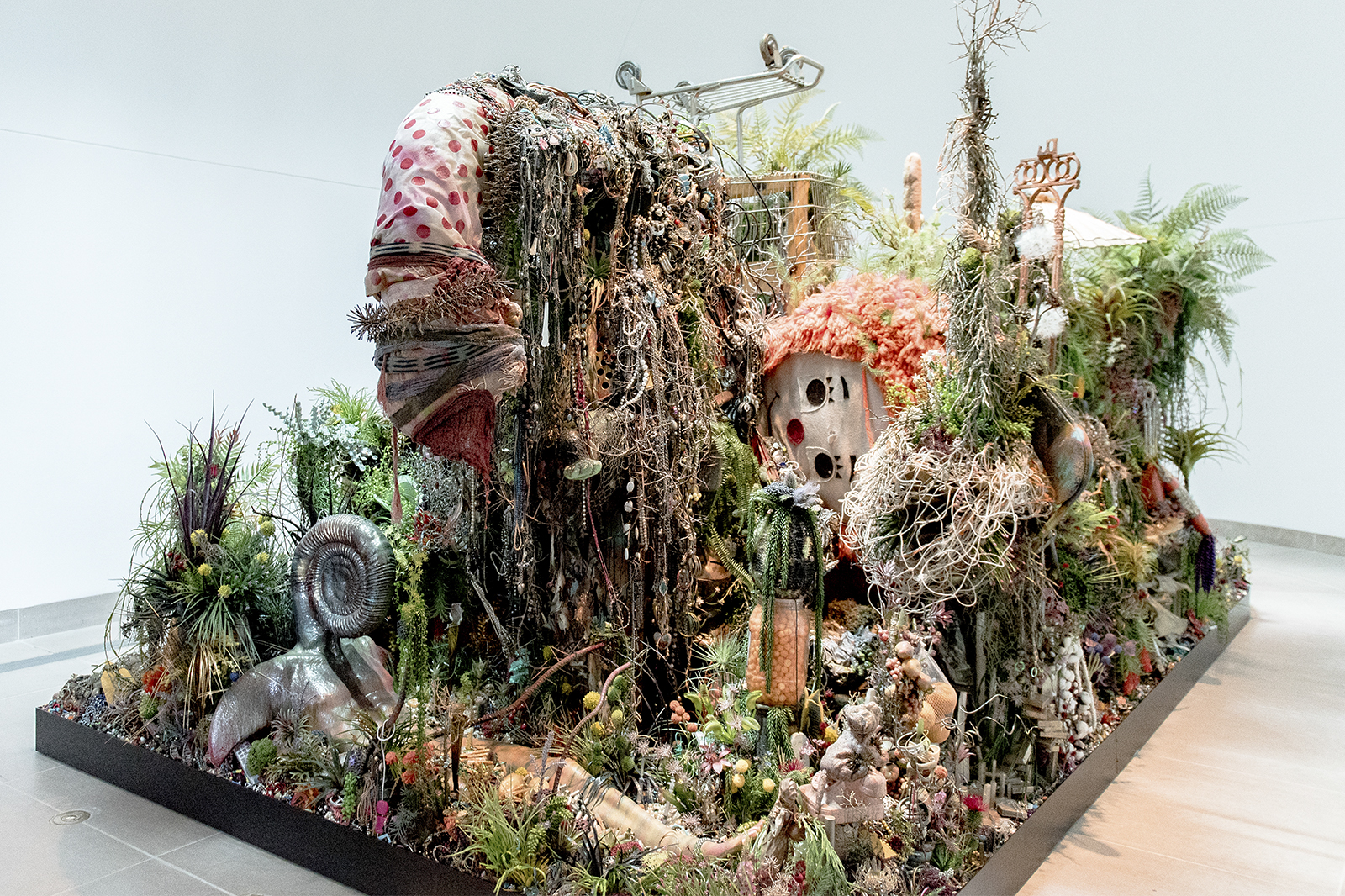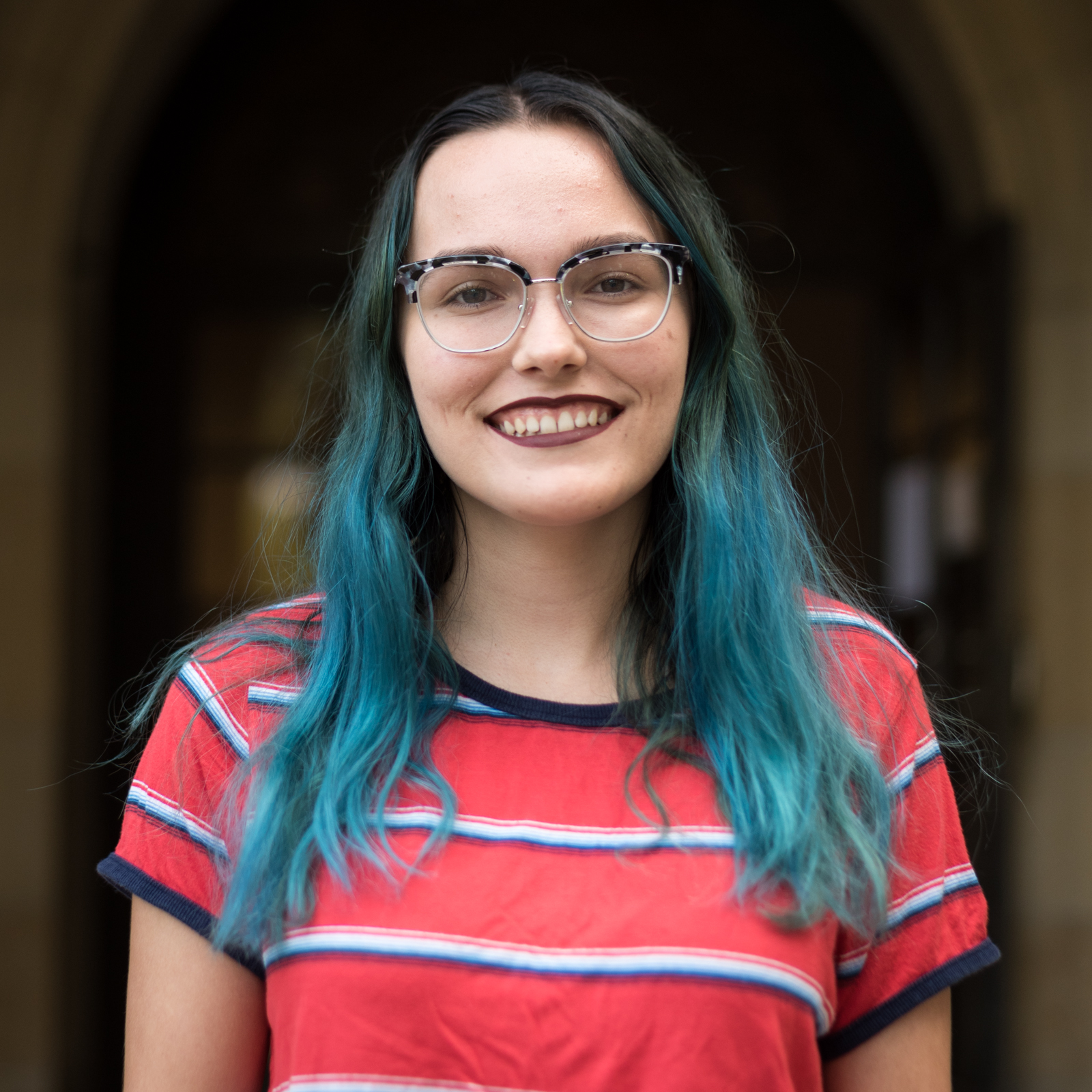Q&A: Artist examines creative process involved in making immersive installation

Max Hooper Schneider’s exhibit “Hammer Projects: Max Hooper Schneider,” will be on display at the Hammer Museum through February. Schneider said the project uses materials he collected over time to fill the space. (Kanishka Mehra/Assistant Photo editor)

By Kristin Snyder
Oct. 15, 2019 11:04 p.m.
From afar, Max Hooper Schneider said his art exhibit looks like an opal comprised of trash.
His work, “Hammer Projects: Max Hooper Schneider,” is on display at the Hammer Museum until February. The project portrays a contained, urban jungle consisting of materials the artist collected over time. Hooper Schneider said his piece is made of detritus that forms an archipelago, and he used his background in architecture to envision how to fill the space.
Hooper Schneider spoke with the Daily Bruin’s Kristin Snyder about his creative process and how he utilized the space within the Hammer to create the immersive landscape.
[RELATED: Authors to examine Central Library fire and value of such spaces at Hammer Museum]
Daily Bruin: This is your first solo museum show. How does that feel?
Max Hooper Schneider: It feels like ecstasy, to be honest. At the Hammer Museum, the curators were kind of brewing on it for almost a year, if not longer. I don’t think I could’ve had a better first institutional experience because the museum was really rigorous and precise and they matched my rigor. The installation and execution was seamless. It’s appealing to all generations, which is really important to me. I would hope that there’s something to catalyze the imagination of people in all walks of life.
DB: What was your creative process for this exhibit like?
MHS: The creative process is three tiered. Lots of conceptualizing the work. And then the main crux of this was that I’ve been hoarding materials and scavenging materials and taking things out of my studio, and I took all this stuff out to the desert of my mother’s house. That’s where I started distressing and recombining and fabricating and making new material. That happened over the course of two months. There was more talk than actually making. When it got down to me being able to make this thing, it was like being a wild person. And then the third part was mapping it out and diagramming the installation in the studio.

DB: How would you describe the exhibit?
MHS: There’s two terms that I’ve coined, which is what I call the ecology of neglect and the politics of succession. … I’m looking at what happens in the afterlife of a lot of materials. So it’s consumption, post-desire, and also landscapes and transformation. There’s this idea of a climax community and what happens when an ecosystem collapses – new species, new ecologies kind of volunteer themselves. This really kind of speaks to every material under the sun, recombined, mutated and interwoven to create a novel landscape. This is not a speculation, I really am presenting nature itself. It may not be the nature that we see every day in the streamlined, polished metropolis. It’s very like Los Angeles, where things are kind of hidden in the excerpts of the built environment.
[RELATED: Hammer’s ‘wasteland’-themed Arts Party considers material reuse, artistic inspiration]
DB: What are some of the challenges in creating an immersive installation?
MHS: Probably controlling your own impulses, at least for me. Moments of restraint, I have a hard time doing that. I would say the biggest challenge of something like that, if you want to use the word immersive, is you have to do forensics of the actual exhibit itself, the institutional context. We really have an understanding of the architecture, the infrastructure and the lighting. It’s technical. To be honest, it wasn’t tricky because the museum is really pro and engaged. The sonic and lighting elements of this piece, we staged all of this in my studio prior to the transplant.

DB: Do you have a favorite aspect of the installation?
MHS: It’s hard to say, because I do see it as one giant garden and one cohesive homogenous thing. But I really like the density of the jungle on the giant Raggedy Ann arm on the locker. I like the giant Oreo that has this oil slick-like epoxy layering on it. I like that just because it looks wet. I like things that look wet and glossy. There’s more play with light.
DB: You come from a diverse background with experience in architecture and marine biology. How did that impact this exhibit?
MHS: It allows me to have a different relationship with material. I have a technical skill set. In the same way, there are conditions for my research. I don’t know necessarily, let’s say, empirical systems of knowledge. It’s my job as an artist to break those down. I use these disciplines as a starting point for remystifying the world. They’re preconditions for my research. They help me tell stories.
If I want to talk about invertebrate or extremophilic life inheriting the planet, I can. These are just things I’m passionate about. Most of us are pluralistic or discursively kaleidoscopic. I just happen to have some formal training in bygone eras of life. … The one thing I want to push in my work is that all material has an equal opportunity to act. There will be things that grow on top of destroyed landscapes and pollution.


